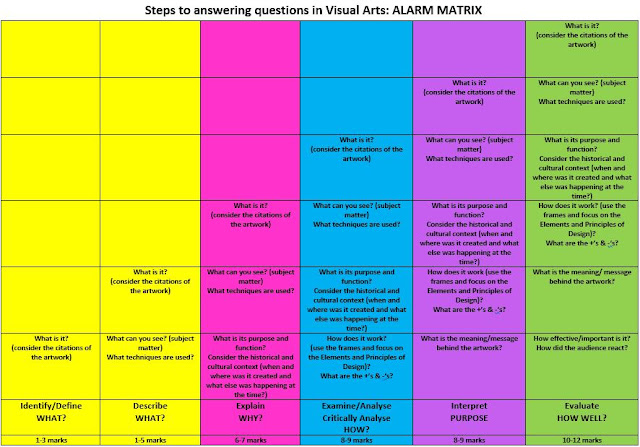Lesson idea: Jim Carrey
I love going on Facebook and Instagram for teaching ideas. A recent video that has received a lot of attention (1.5 million views) is Jim Carrey's 6-minute documentary based on his thought processes when painting.
Jim Carrey: I Needed Colour
The exciting part about this video is the different reactions received. Some have congratulated him on his new direction such as IndieWire's article Jim Carrey is now an amazing painter and his art documentary is going viral while others, including The Guardian Jim Carrey's art is yet more proof that Hollywood stars should avoid the canvas has criticised him, calling his art "shallow" and "pretentious".
I plan to show this video to my Year 11 students on Thursday period 6. Being the last period of the day, a video should help spice things up and keep them awake. The majority of the students will know this Canadian star. He is famous for starring in movies such as Dumb and Dumber, The Mask and has earned $20 million for his film The Cable Guy.
I want my students to consider Jim Carrey's thought processes while watching the short documentary. It goes through Carrey’s artworks as it films the actor painting, sculpting and explaining why he got into art in the first place. “When I really started painting a lot I had become so obsessed that there was no where to move in my home. Paintings were everywhere. They were becoming part of the furniture, I was eating on them,” he says.
The actor revealed his passion came after walking around New York City one day “in a really bleak winter”. “It was just so depressing. I needed colour,” he says. “You can tell my inner life by the darkness in some of them. You can tell what I want from the brightness in some of them,” he adds.
I plan to share a bit of background information based on how Carrey has had a dark few years following the suicide of his ex-girlfriend Cathriona White in 2015. A year after her death, White’s mother filed a wrongful-death lawsuit against the actor alleging he provided her daughter with the drugs that killed her.“I don’t know what painting teaches me, I know it just frees me. Free from the future, free from the past, free from regret, from worry,” he says in the video. “I sketched all the time, but I didn’t do a lot of painting. Suddenly, six years ago, at a time I was trying to heal a broken heart I thought well, maybe I’ll paint,” he said.
As the teacher, I will discuss with students the power of art:
-Art has the ability to address personal issues that resonate beyond us.
-We are able to share our lives through art. Art benefits the body, mind and spirit.
Class activity (signs idea inspired by a comment in an art thread)
Put signs around the room: Yes, No, Agree, Disagree, Maybe. Students have to move to one or the other to defend their judgements. Students need to reason and critically think why they make the options that they have.
Questions:
1) Do you like the artwork? Yes/No (ask students to references images from the video)
2) Would everyone still hold their opinions of the art if it didn't belong to a beloved celebrity? Why?
Read The Guardian Jim Carrey's art is yet more proof that Hollywood stars should avoid the canvas article out to students.
After reading the article:
1) What is wrong with his paintings?
2) Do you agree that his artwork is shallow? pretentious? Why? Why not?
3) Do you think he should be discouraged by this critic?
4) What powers does an art critic hold?
Teacher to discuss the hateful piece of written language filled with judgement and negativity.
4) What powers does an art critic hold?
Teacher to discuss the hateful piece of written language filled with judgement and negativity.
The teacher will talk about art critique:
Critiquing others should offer helpful suggestions. It should be aimed at the artwork and not the artist. The information given should be valuable to the artist and not a list of things that are not working. At the same time, it should not be vague compliments.
I will be informing students that the artist has had a solo exhibition Nothing to See Here. It contains 40 of his creations. Carrey directs his assistants and the gallery staff to position the lights for optimum effect. "I'm addicted to the idea of creation". "I think you're kidding yourself if you think you're creating for yourself. You create for others to experience it".
Questions:
1) Do you agree with this statement? Yes? No? Why?



Comments
Post a Comment